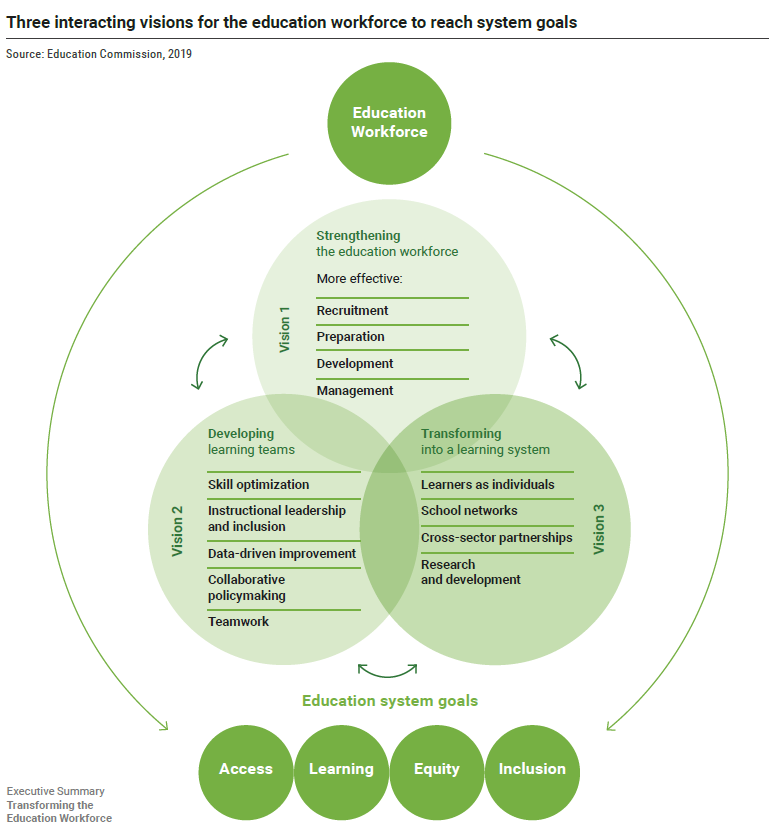Share Content
Article Link Copied
New visions for a more effective education workforce

The workforce is an education system’s biggest investment and one of its greatest levers for change. The recently published Education Commission’s Report draws on existing evidence and innovations from education and other sectors to rethink the education workforce needed for the future.
To meet SDG 4, teachers are critical but they cannot work alone. It takes a team to educate a child – teachers need leadership and support to be effective and to help learners with the greatest needs. Achieving inclusive and quality education for all requires urgent action to harness the broader education workforce. The Education Commission’s Report offers three visions on how to achieve quality education for all.
We are just over 10 years away from the 2030 deadline to enable quality education for all, as outlined by the United Nations’ Sustainable Development Goal 4 (SDG 4). Yet, there are still more than 260 million children out of school and more than 600 million in school who are not learning the basics or the skills, knowledge, and values required to thrive now and in the future. Teacher quality is a very important determinant of learning outcomes at the school level, but in many countries teachers are in short supply, isolated, and not supported to provide effective teaching and learning.
To address those urgent education challenges the Education Commission proposes in its Report “Transforming the Education Workforce” three interacting visions for change.
Vision 1: Strengthening existing systems
• Professionalize teachers and other key roles with appropriate recruitment, training, professional development, career paths, and working conditions to enable them to be effective.
• Improve workforce planning, deployment, and management, which means robust data must be available and utilized.

Vision 2: Developing learning teams
• Develop collaborative teams focused on improving education outcomes in the classroom, within schools, and at all levels in the system to result in more effective teaching and better support for inclusion, on-the-job learn¬ing, and motivation.
• Developing learning teams does not necessarily involve hiring new staff – it entails diagnosing the challenges, understanding existing roles and skills, and considering how best to utilize them in a team; realigning roles; focusing any new roles on the areas of greatest need; and enabling more teamwork.
Vision 3: Transforming an education system into a learning system
• Harness learning teams to build networks of schools, professionals, and cross-sectoral partnerships that use data and evidence to transform edu¬cation systems into learning systems that are self-improving and adaptable to change.
Finally, the report calls for collectively taking on the challenge of reforming the education work-force. To test, analyze, scale and promote changes that better prepare and support the education workforce and young people to learn and work together so they have the skills they need to succeed.